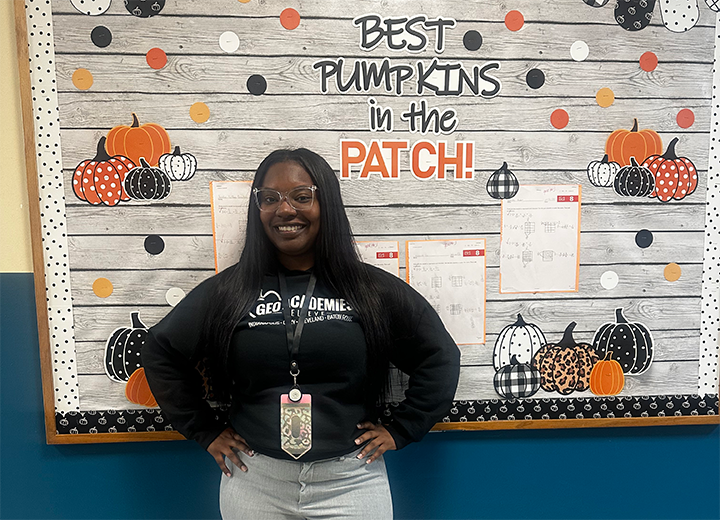In a classroom context, positive affirmations are phrases and acknowledgments of positive aspects of a child’s personality, effort, behavior, or other characteristics. When affirmations are present in your classroom daily, it helps to set a positive tone within your classroom environment and enriches children’s perceptions of themselves. You may be most familiar with positive affirmations as a way for students to acknowledge aspects of themselves and use them as a mantra to help them continue to behave in a certain way. For example: “I am kind. I am smart. I am a hard worker. I am a helper. I am a leader.” Recited often, individuals may begin to have a healthier outlook on life, their character, and what they are capable of.
The point of positive affirmations is to acknowledge yourself and others from a place of positivity and not criticism. This helps create motivated and happy children who value themselves, their work, and their peers.
What Kids Can Do For Themselves
Children should move past simple statements that make them feel better at the moment, like “I can do hard things,” and should also tie that to specific examples of what they have done in the past and what they can do in the future. Teaching your students to focus on the “why” and rationale behind their affirmation will help develop children into individuals who can self-reflect healthily and teach them how to build up their self-esteem. Providing specificity allows children to see their individual values for themselves. For example, if a child says about herself, “I am smart,” and repeats that affirmation over time, does she really do anything to support and develop her character? What happens when she is challenged by a child smarter than her or one that performs better on certain tasks? Instead, consider if that child drilled down to something more specific like “I am creative and think of unique ideas for projects. This makes me great at science projects, even if I don’t always get an A on science tests. I am smart in science because I do a lot of research to understand things well”. By explicitly defining her “smartness,” she is teaching herself to self-reflect on her strengths, and makes it more likely that she will be able to maintain healthier self-esteem on her own.
What Kids Can Do For Peers
Peer-to-peer affirmation is beneficial for many reasons. First, it allows students to hear positive aspects of their character from their peer group. It also helps establish care for others, kindness, and respect for each other within a classroom environment. For the student providing the affirmation, it also helps to foster gratitude and appreciation for others and helps the child see the good in others. For the student receiving the affirmation, it can help shed light on aspects of their personality they may not have valued enough and allow them to think more highly of themselves. We want specific affirmations because it indicates to others that they have unique characteristics important to their community. When we hear others point out our strengths, it helps us feel valued and understood.
Use these prompts to help students foster positive affirmations for others. Group students in pairs. Allow students to self-pair, strategically assign pairs, or randomly assign pairs. Ask each student to complete the strengths questions below for his or her partner. Then, allow them the chance to discuss their thoughts with one another:
- Your strength:______
- Why do I feel like that is your strength?__________
- Why do I feel like that is important?________
- You are so creative! I feel like that is your strength because every time I see your science project, you always have something extra, like lights or cool materials. This is important because you can always express your ideas in interesting ways.
Implementing Positive Affirmations In Your Classroom
How do you provide feedback to your students? Do you congratulate them for a high score, or do you praise them for their effort? Do you provide specific insights into what makes them great, or do you simply give some general platitudes? How you model your praise for your students will allow them to praise themselves and their peers. As you support students in providing positive affirmations to themselves and to one another, set aside some time in the day throughout your school year for them to brainstorm and write specific praises.
If you require a project presentation, build in affirmations after each project so students can identify specific highlights of a peer’s work and effort. After a final exam, ask students to reflect on their strengths- even if they didn’t achieve a high grade. By building in specific times of the year tied to an activity or event in the classroom, you can help teach students to look at themselves and others with kindness and positivity to learn to identify the best characteristics of themselves and others.


















%2015.png)
%20100.png)
%203%20%2B%20Spotlight.png)
%209.png)
%208%20%2B%20Spotlight.png)
%208.png)
%207.png)




%204.png)
%203.png)
%202.png)
%201.png)
.png)
.png)

.png)

.png)
.png)
.png)
.png)
.png)
.png)
.png)